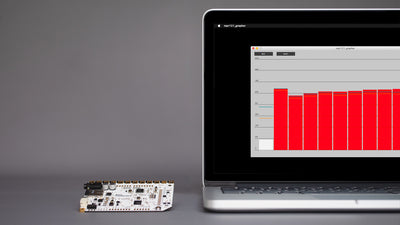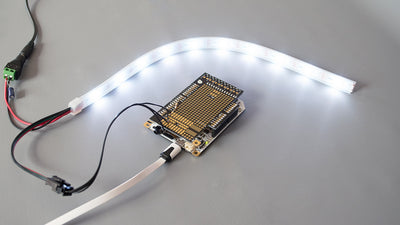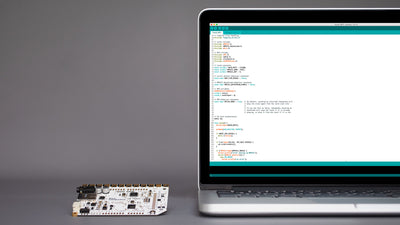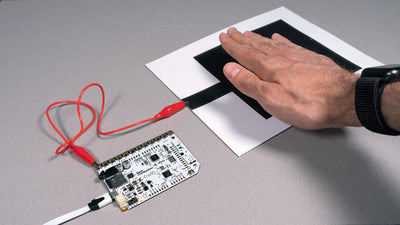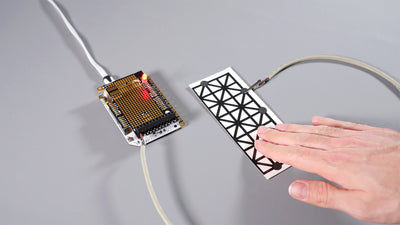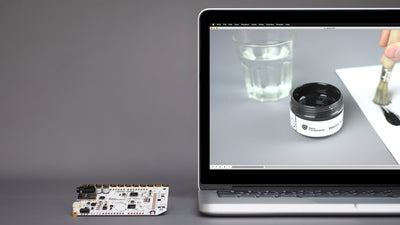How To Change The MP3 Tracks On The Touch Board

Create a custom Touch Board project by playing your own audio files
One of the Touch Board's defining features is to play music, a recording, or a sound when touching the board's electrodes, acting as an MP3 player, out of the box! The Touch Board comes pre-loaded with an audio guide to help you familiarize yourself with all its features. The audio guide is stored as twelve MP3 files on the board's microSD card. Changing these files is straightforward. There is no programming required!
The key is to follow the appropriate naming structure for your MP3s to ensure each electrode will trigger the right sound. All you need is a microSD card reader and some great sounds!
We love it when you share your projects! Post your project on Instagram, YouTube, or Twitter, and make sure to tag @bareconductive or use #bareconductive. You can also send your videos and photos to info@bareconductive.com so we can post them on our site for the world to see.
You will need:
- 1 x Touch Board
- 1 x USB Micro B to USB A or USB C (depending on your computer's USB port type)
- 1 x Computer running Mac OS, Windows, or Linux
- 1x MicroSD card reader
Step 1 Prepare the MP3 files
The first step is to select the sounds that you want your Touch Board to play. You may wish to record custom sounds or already have a library of audio to choose from. YouTube is an excellent resource for finding MP3 music (via a download tool) as is freesound.org. Make sure that each file is an MP3 file. If they aren't in MP3 format, you can always use an online MP3 converter. Note that the file size is important; it takes longer to load if it's too large.
To use the MP3 files on the Touch Board, you need to rename them. The Touch Board follows a naming structure, where TRACK000.mp3 is for electrode E0, TRACK001.mp3 for E1, and so on, up to TRACK011.mp3 for E11. You'll see "E0" through "E11" marked on the edge of your Touch Board near the gold electrodes.
In this example, we have two tracks that we want to use: "Bleat.mp3" and "Bluejay.mp3". We want to use them with the first two electrodes, E0 and E1. So we rename the tracks to TRACK000.mp3 and TRACK001.mp3.
Step 2 Copy the files onto the Touch Board
Take the microSD card out of the Touch Board by pushing it in. It should pop out.
Put it inside the microSD card reader and put the reader inside your computer. The SD card should show up as "TB Audio." Have a look inside the folder. You will see all multiple files, including the audio files named TRACK000.mp3, TRACK001.mp3, and so on.
Copy-paste the new sounds onto the SD card, simultaneously removing the old TRACK000.mp3, TRACK001.mp3. Don't worry. You can always download them here if you need them again. Once you have finished copying the files, remove the SD card from your computer.
Step 3 Test the new tracks
Pop the microSD card back into the Touch Board, connect some speakers or headphones to the Touch Board, and turn the Touch Board back on. Try touching electrode E0 and E1. You should hear the new track for each electrode!
Step 4 Next steps
Now that you know how to change the audio file for each electrode on the Touch Board, you can get creative and connect all sorts of conductive materials to the Touch Board's electrodes. You can use Electric Paint to paint your very own sensors and give an audiobook a new interpretation.
If you want to edit a music file, we recommend the app Audacity. You can use it to trim and adjust the amplitude of a file. If you want to play video files with the Touch Board, check out our video player tutorial.


